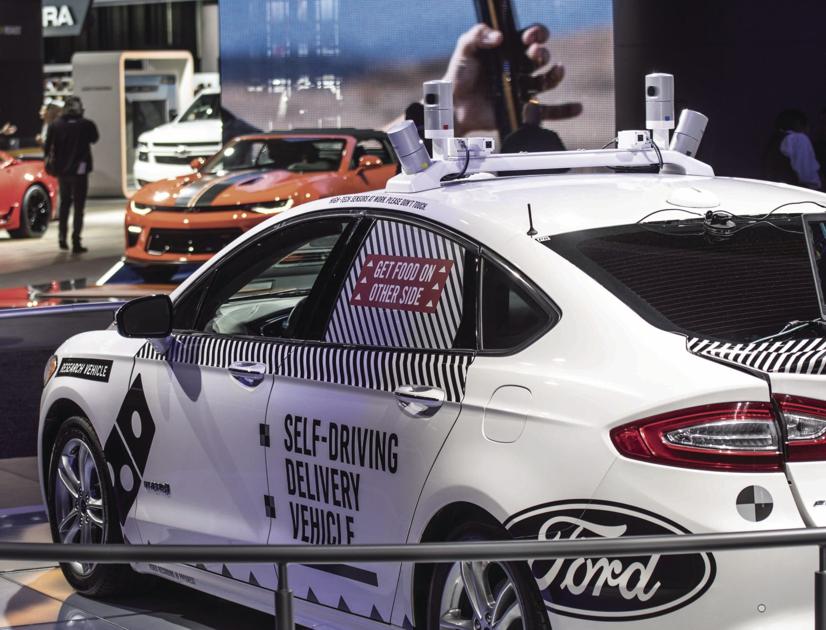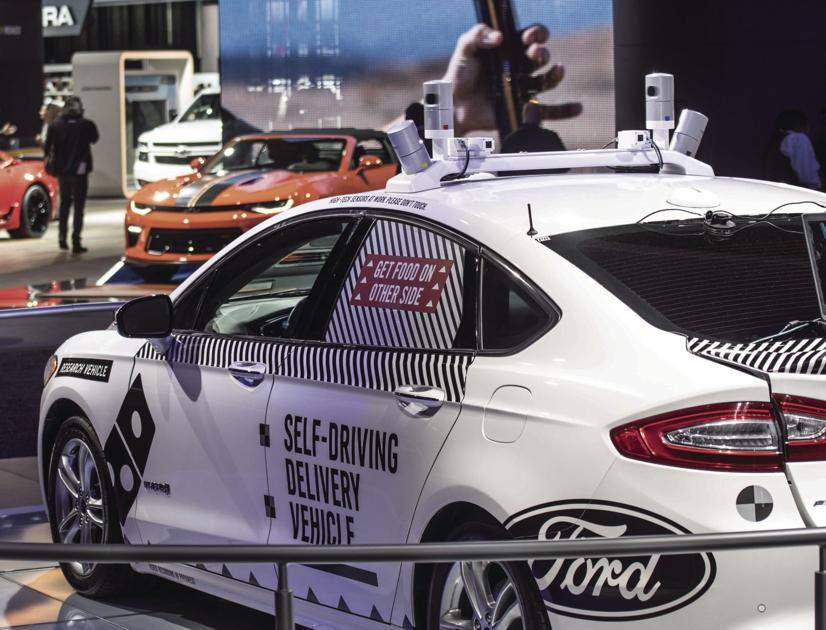
Robots roaming the aisles, retail customers scanning QR codes on mannequins with an app, families dining on insects and algae.
These are just a few of the lifestyle predictions being made today about what our lives might be like just 20 years from now.
Now that we have a few moments to reflect on our past year and are making plans for 2019, let’s take a look through a crystal ball at two decades into our future.
Just about everything in our homes will be “smarter” than we are.
“Your home will definitely be leaning toward ‘smart’ connectivity, being able to tell you the condition it’s in,” said local builder Jeff Wedding of Lakes & Land Custom Homes.
Your HVAC system, windows, blinds, lighting, appliances and
even entertainment will all be operated wirelessly from your smartphone or computer.
Wedding said that security and safety will be a huge focus. Families will use cameras and monitors to protect their houses when they aren’t at home. Security companies will use biometrics authentication, identifying a person’s unique biological characteristics, that will confirm a person’s identity before they can enter a homeowner’s front door.
“Many of the services in your 2039 home will also revolve around the changing transportation industry,” Wedding said. “Your home will accommodate electric vehicles or hookups needed for other means of transportation.”
Building materials will be made out of more recyclable products. “Look for more energy efficient windows, insulation and shingles, plus widespread use of alternative energy, including wind turbines and solar panels,” Wedding said.
Watch for smart appliances that monitor the foods we eat and recommend healthy alternatives. Other kitchen appliances will automatically re-order items we run out of, like food, detergent or paper towels.
Our bedrooms may have connected mirrors that will act as virtual personal stylists, and robots will help with everyday tasks, such as picking items off the floor and preparing dinner. Robots might also provide companionship, assistance, and entertainment for children or elderly family members.
The world is expected to reach a population of 9 billion people by 2040. With that growth comes a concern about feeding all these people while preserving our environment and resources.
This is what National Geographic thinks we’ll be eating several decades from now:
• Crickets, in the form of cricket flour. Now available in many supermarkets and online, cricket flour can be turned into chips, protein powder, snack bars, baked goods or used as animal feed.
• Kernza, an ancient prairie grain also known as intermediate wheatgrass. This grain is a perennial plant that produces grain for five years, as opposed to wheat’s single year of production.
• Plant-based meat, using plant products like pea protein and beetroot juices. This reduces many of the industrial problems and ethical issues associated with factory farming.
• Lab-grown meat. Today, there are 15 companies working to bring lab-grown poultry, beef and even foie gras (fattened liver of duck or goose) to the market, but it will likely be close to 30 years before it will become a grocery staple.
All the talk today is about self-driving cars, yet many people in the automotive business believe those days are coming, but not within a 20-year period.
“I don’t see much changing in the next 20 years with self-driving cars,” said Jeff Canever of Vic Canever Chevrolet. “Many manufacturers have said they think in 50 years that 85 percent of people will still be driving their own traditional cars. They won’t want to give up their freedom and independence.”
However soon autonomous cars become a reality, it’s evident that a lot of change is coming to the auto industry. Uber and Lyft ride-sharing services are changing the way people are moving from point A to point B.
Technology continues to expand a car’s capabilities — from smartwatch integration to controlling your car with hand gestures, called “3-D gesturing.”
The days of walking the dealership lot searching for a new car are over, according to Autonews.com.
Brick-and-mortar dealerships in the future will still have value, especially those that improve their digital presence and technology for a faster transaction time, according to Autonews.com. Test driving might be done on a simulator, to avoid heavy city traffic.
Retail shopping
A blend of digital and physical shopping in a brick-and-mortar location is what global management consultants Bain & Company predicts retail shopping will look like in the future.
It won’t be about e-commerce vs. brick-and-mortar; a blend of the two will allow shoppers to shift seamlessly between both realms, with stores still playing a critical role for consumers.
There will be more use of virtual and augmented reality. For example, imagine walking around a store wearing smart glasses and digitally dressing a mannequin with clothes you see and like. If you decide to buy, your identity is verified with a scan of your eye’s iris. Then your payment is made digitally.
Ronny Medawar of Medawar Jewelers in Fenton, sees the retail aspect of his business changing, even though what jewelry itself represents stays the same.
“It’s all about marking the moments of peoples’ lives,” he said. “We’re always evolving. Retail has changed dramatically in the last 10 years, not just because of online, but also our clients’ habits and customs, the way they purchase and what they’re buying.”
He said that Medawar Jewelers is evolving with technology to make a more personal experience for the client. “We’re turning our efforts into creating those experiences.”

